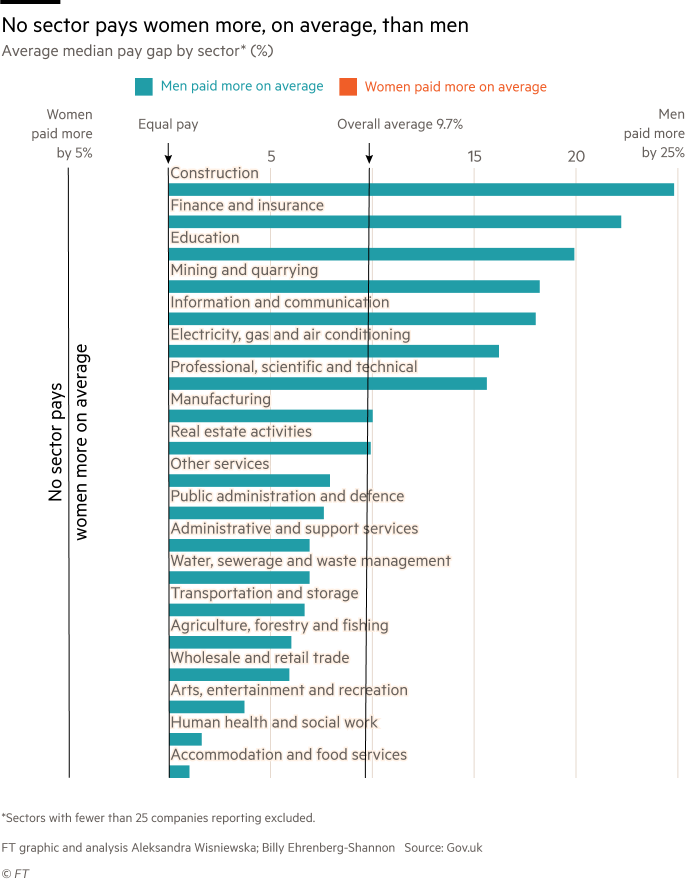Three out of four UK companies pay men more than women on average
Roula Khalaf, Editor of the FT, selects her favourite stories in this weekly newsletter.
Three out of four UK companies pay men more than women, with an average pay gap of 9.7 per cent, according to data supplied by businesses ahead of a deadline of midnight on Wednesday.
Under rules introduced last year, UK employers with 250 or more workers are required to report the difference between what they pay men and women. On Thursday morning, 10,016 employers had submitted data, exceeding the government’s estimate that 9,000 employers would have to report.
A total of 1,652 public sector employers — 60 per cent more than expected — had submitted their gender pay, while in the private sector, 7,808 employers submitted their figures.
Based on the data, the average median pay gap in the private sector is 8.1 per cent. The average median pay gap in the public sector is 14 per cent.
The data showed that the sectors with the worst gender pay gaps were construction, where male staff earn 24.8 per cent more on average than female employees; financial and insurance services, which pays men 22.2 per cent more on average than women; and education, where the gap is 19.9 per cent.
No sector pays women more than men, on average, but industries with the smallest gaps include accommodation and food services, where female employees earn just 1 per cent less, on average, than their male counterparts, and health and social care, where women earned 1.6 per cent less on average.
There also have been anomalies in the data. Fifty employers have reported pay gaps of zero measured by both the mean and the median, which is statistically implausible.

Six have reported pay gaps that imply the average male or female salary is less than zero, which is impossible.
At least 484 employers have also changed their original submissions, including Hugo Boss, which changed its data three times.
It is also unclear whether the Government Equalities Office, which is responsible for the reporting portal, and the Equality and Human Rights Commission have the tools they need to find companies that fail to report.
The EHRC said it “will be keeping a record of those who reported after the deadline, should enforcement be needed in future”.
Amber Rudd, home secretary, said on Wednesday there was “absolutely no excuse for businesses in the private sector not to be transparent about their gender pay gap before the deadline set down in law”.
How the gender pay gap was calculated
To calculate the overall median and the average of the pay gaps of multiple companies, we have used a median of medians. This is imperfect, but without individual salary information it is impossible to get a true average.
In our best/worst-performing sector analysis, we exclude sectors with fewer than 25 company submissions because a small sample size is more vulnerable to having its average skewed by outliers.
The overall median pay gap of 9.7 per cent is not comparable to the Office for National Statistics’ national average of 18.4 per cent due to methodological differences.
This story has been amended to remove a reference to NWN Media, which according to the government’s gender pay portal, had the widest median pay gap favouring men. The company has now corrected its entry.
Comments